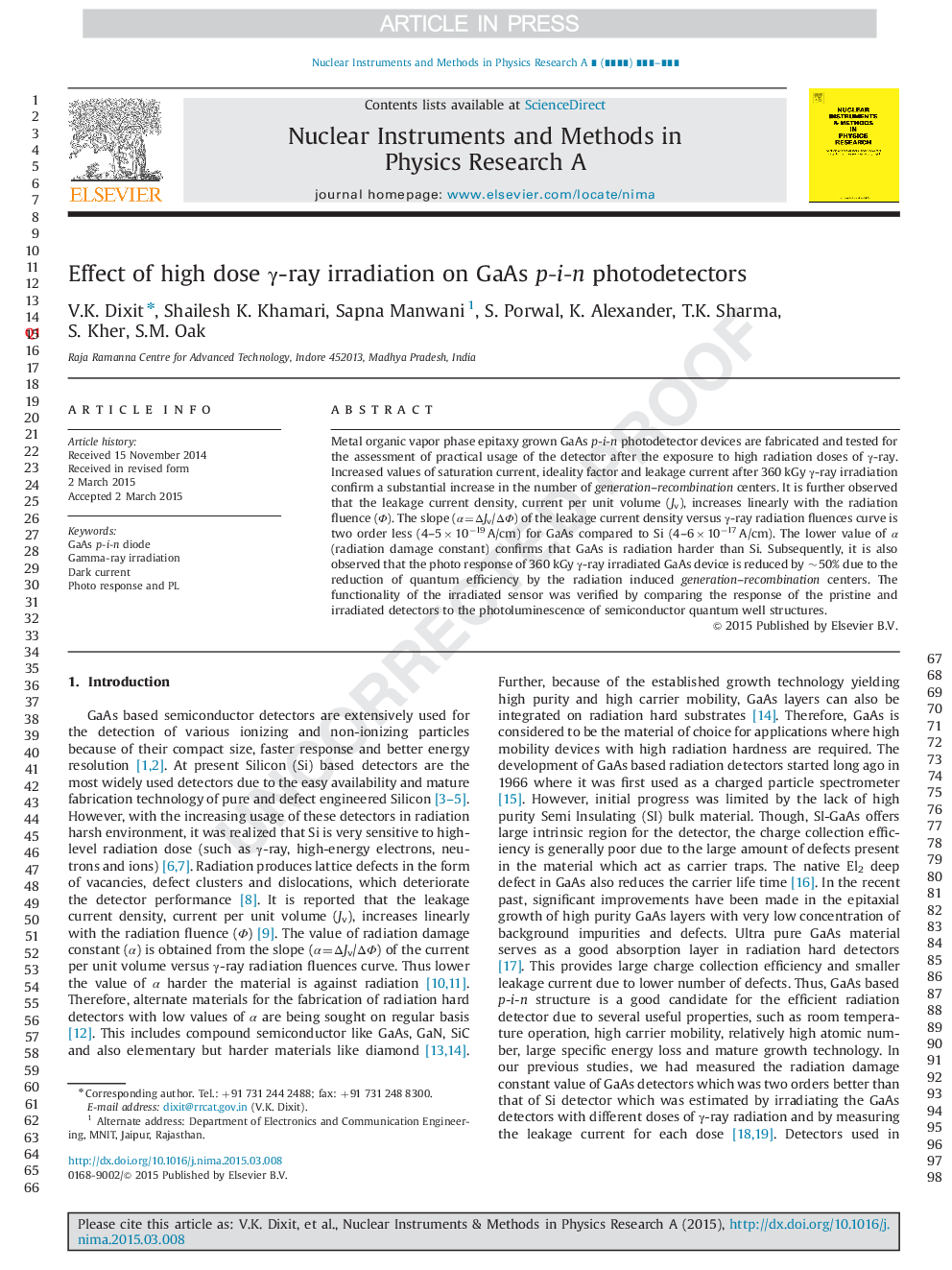| Article ID | Journal | Published Year | Pages | File Type |
|---|---|---|---|---|
| 8173408 | Nuclear Instruments and Methods in Physics Research Section A: Accelerators, Spectrometers, Detectors and Associated Equipment | 2015 | 6 Pages |
Abstract
Metal organic vapor phase epitaxy grown GaAs p-i-n photodetector devices are fabricated and tested for the assessment of practical usage of the detector after the exposure to high radiation doses of γ-ray. Increased values of saturation current, ideality factor and leakage current after 360 kGy γ-ray irradiation confirm a substantial increase in the number of generation-recombination centers. It is further observed that the leakage current density, current per unit volume (Jv), increases linearly with the radiation fluence (Φ). The slope (α=ÎJv/ÎΦ) of the leakage current density versus γ-ray radiation fluences curve is two order less (4-5Ã10âl9 A/cm) for GaAs compared to Si (4-6Ã10âl7 A/cm). The lower value of α (radiation damage constant) confirms that GaAs is radiation harder than Si. Subsequently, it is also observed that the photo response of 360 kGy γ-ray irradiated GaAs device is reduced by ~50% due to the reduction of quantum efficiency by the radiation induced generation-recombination centers. The functionality of the irradiated sensor is verified by comparing the response of the pristine and irradiated detectors to the photoluminescence of semiconductor quantum well structures.
Keywords
Related Topics
Physical Sciences and Engineering
Physics and Astronomy
Instrumentation
Authors
V.K. Dixit, Shailesh K. Khamari, Sapna Manwani, S. Porwal, K. Alexander, T.K. Sharma, S. Kher, S.M. Oak,
